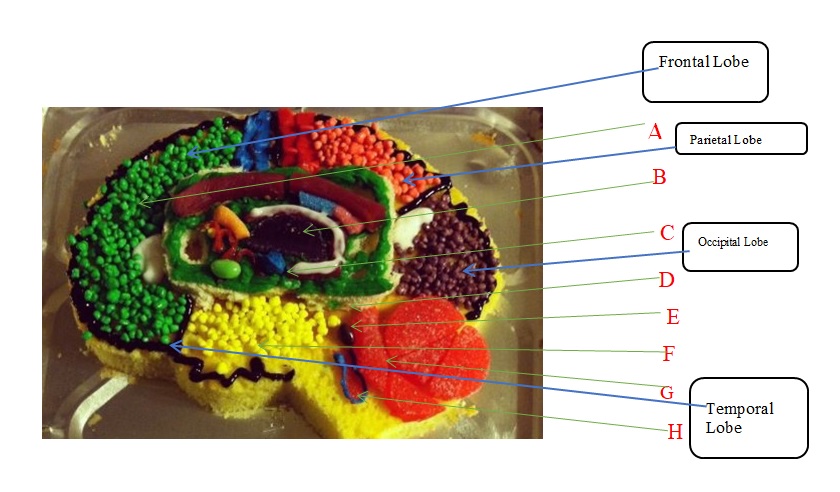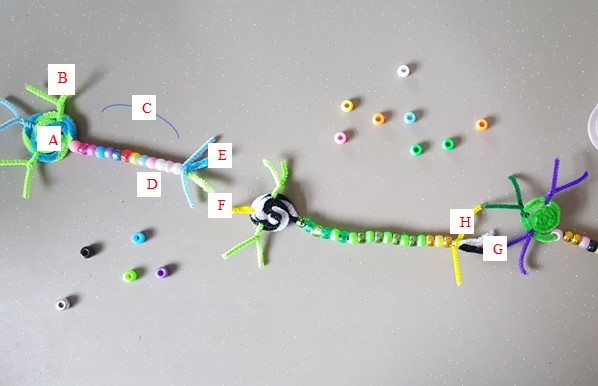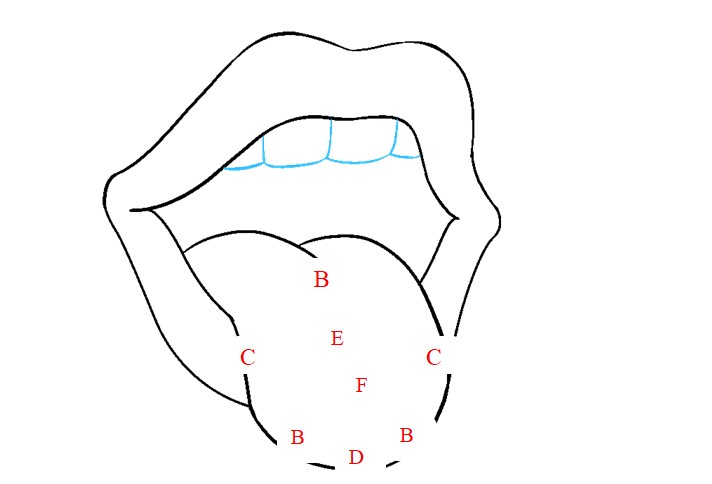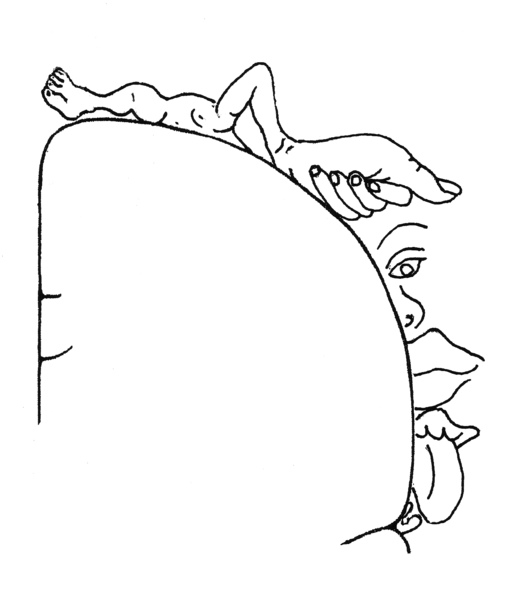The brain is the most vital component of the human body. It directs and organizes actions and responses, helps think and feel, and provides human experiences such as memories and emotions. This research paper consists of three parts that highlight the three-dimensional sagittal view model of the brain, the structure that underlies neuronal communication, and three projects to get some first-hand understanding of sensation and perception. The sections aim to explore the brain’s role in developing perception necessary in the sense of awareness essential in human existence.
Model of the Brain
Figure 1 shows a sagittal view model of the brain modeled to represent different sections responsible for the brain’s functioning. The labeling shows the shape and relative position, including cerebellum, thalamus, hypothalamus, pituitary gland, amygdala, hippocampus, medulla, and pons. All the brain’s four lobes, including the frontal lobe, parietal lobe, occipital lobe, and temporal lobe, are also labeled. Table 1 provides a “key” that explains where each required part is represented in the models as per the alphabetic sequence used. The intention is to visualize and locate some of the critical structures in the human brain.

Table 1: Figure 1 Key.
The structure that Underlies Neuronal Communication
Part B involves understanding the neurobiology that underlies human experience. This section explores how communication occurs in the brain, specifically how neurons communicate with each other. Figure 2 shows a 3D model of communicating neurons with labeled cell body, dendrites, axon, myelin sheath, axon terminal, containing vesicles of the neurotransmitter, on the sending neuron and synapse. The neurotransmitter molecules and receptor sites are also labeled on the receiving neuron.

Table 2: Figure 2 Key.
Sensation and Perception Demonstrations
Part C of this research paper experiments on understanding sensation and perception through small, first-hand demonstrations. The three selected projects include Tasty Buds, The Nose Knows, and Two-Point Discrimination. The procedure involved getting support from a friend. Based on the ethical code in experiments involving humans, this segment engages a 31-year-old friend after agreeing to participate. The participant understands that participation is optional and may withdraw at any moment. The participant is instructed on the procedures involved in data management. After the experiment, the volunteer was informed about the purpose of the research, the hypothesis, and the findings.
Tasty Buds
The tasty Buds experiment draws a map of the tongue indicating the sensations most sensitive to the different substances. Figure 3 labels some parts of the tongue that were good at detecting tastes from the foods in the experiment. Part F of the tongue did not detect any of the tastes. The most likely reason is that the human tongue’s dorsal core is devoid of fungiform papillae and taste buds.

Table 3: Figure 3 Key.
The Nose Knows
The Nose Knows experiment involves engaging a friend based on the ethical codes on testing mashed banana, avocado, potato, melted butter, eggs, applesauce, jelly beans, garbanzo beans, sweet potatoes, and Weetabix baby food. The experiments observed that the tester could identify mashed bananas and applesauce only. Foods that seem to be strongly associated with smell in the selected category include melted butter, eggs, jelly beans, garbanzo beans, sweet potatoes, and Weetabix baby food. The commonality with these foods is that they do not have a uniquely distinctive taste. During the interview, it emerged that humans tend to find rotten eggs to smell disgusting, probably because of the hydrogen sulfide composition, which smells like Sewer gas. The nose seems to function closely with the tongue to taste in foods.
Two-Point Discrimination
Two-Point Discrimination was also conducted as per the ethical codes in research, with the results showing that the forearms are the most sensitive parts of the body with 2.5mm. The observations are similar to the skins senses table research by Dan R. Kenshalo that shows fingers are the most sensitive at 2–3 mm (Sawai et al., 2019). Figure 4 relates to the experiment data as it reflects on the somatosensory cortex area responsible for receiving and interpreting relevant stimuli, including touch.

Conclusion
The insights into the brain’s structure, the communication between nerves, sensations, and perception demonstrations reveal the importance of the brain in human life. Part A sagittal view modeling has brought some transparency to the structure of the human brain. Part B complements Part A demonstrating that neural transmission is a complicated electrochemical process whose understanding is beneficial in psychology, especially in determining why some ideas or behaviors become obsessive or unrestrained and how repetition alters the brain. Part C connects the two concepts in Part A and Part B as it demonstrates sensation and perception, an experience that seems to rely on communication between nerves and brains.
References
Hughes, C. L., Flesher, S. N., Weiss, J. M., Boninger, M., Collinger, J. L., & Gaunt, R. A. (2021). Perception of microstimulation frequency in human somatosensory cortex. ELife, 10, e65128. Web.
Sawai, H., Kohda, K., & Kurahashi, T. (2019). The effect of temporal adaptation to different temperatures and osmolarities on heat response of TRPV4 in cultured cells. Journal of thermal biology, 85, 102424. Web.